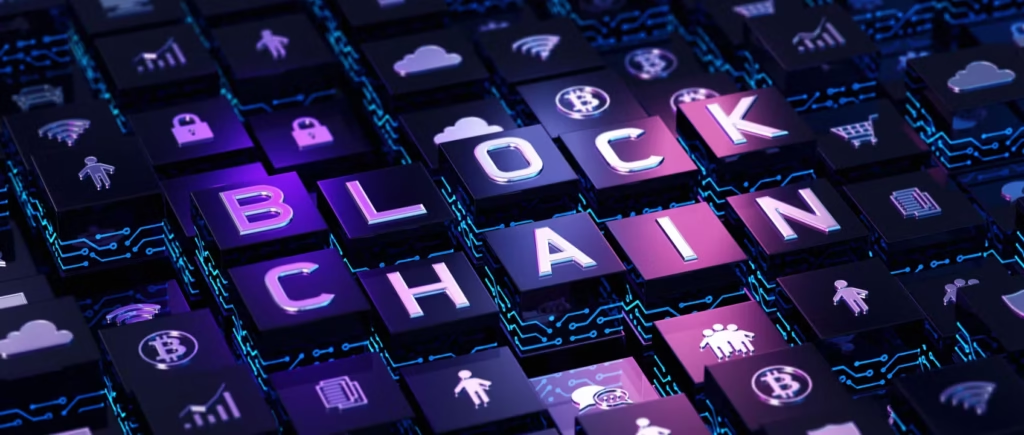1. What Is Blockchain? Simple Definition
Blockchain is a digital system that records data in a way that makes it very difficult or impossible to change or hack.
It’s a chain of “blocks” — each block contains data, a timestamp, and is connected to the one before it.
The most popular use of blockchain is in cryptocurrencies like Bitcoin and Ethereum, but it’s now used in many other industries too.
In simpler words:
Blockchain = digital ledger that is open, shared, and secure.
2. How Does Blockchain Work?
Here’s a simple breakdown of how it works:
- A transaction happens (e.g., someone sends Bitcoin).
- The transaction is broadcast to a network of computers.
- These computers verify the transaction (called consensus).
- Once verified, it’s combined with others to create a new block.
- This block is added to the chain permanently.
3. Key Features of Blockchain
Blockchain has specific features that make it different from any other tech:
- Decentralized – No single entity controls the network.
- Transparent – Everyone can see the records.
- Secure – Each block is encrypted and linked.
- Immutable – Once recorded, data can’t be changed.
- Peer-to-peer – Direct transactions, no intermediaries needed.
4. Types of Blockchain (Public vs Private)
| Type | Public Blockchain | Private Blockchain |
|---|---|---|
| Access | Anyone can join | Only approved users |
| Example | Bitcoin, Ethereum | Hyperledger, Corda |
| Use Case | Cryptocurrencies, NFTs | Banking, Supply Chain |
| Speed | Slower | Faster |
| Transparency | High | Limited |
Filipino startups and financial institutions often explore private blockchains for secure internal operations.
5. Real-Life Examples of Blockchain in the Philippines
Active Use Cases:
- UnionBank of the Philippines uses blockchain for real-time cross-border remittance.
- PHILSYS (National ID System) is exploring blockchain for identity verification.
- Fintech startups use blockchain to build decentralized wallets and lending platforms.
- Play-to-Earn games like Axie Infinity gained massive popularity with Filipino players.
6. Blockchain vs Traditional Database
| Feature | Blockchain | Traditional Database |
|---|---|---|
| Data Storage | Distributed (P2P) | Centralized |
| Editing | Not allowed (immutable) | Can edit/delete data |
| Ownership | Shared (decentralized) | Single authority |
| Security | Very high | Depends on server protection |
7. Pros and Cons of Blockchain
Pros:
- No need for third parties (banks, agents)
- Data is tamper-proof
- Transparent and traceable
- Boosts trust in digital systems
Cons:
- Slower transaction speeds (in some chains)
- High energy usage (for proof-of-work)
- Still misunderstood by the public
- Limited regulation in the Philippines
8. Top Use Cases Today
- Cryptocurrencies – Bitcoin, Ethereum, Solana
- Remittances – Sending money abroad cheaply
- Voting Systems – Tamper-proof elections
- Smart Contracts – Automatic agreements
- Supply Chain – Tracking goods like rice or medicines
Filipino OFWs (Overseas Filipino Workers) are increasingly using blockchain-based remittance tools to reduce fees and delays.
9. Common Myths About Blockchain
- “Blockchain = Bitcoin only”
- “It’s only for tech geeks”
- “It’s illegal in the Philippines”
- “It wastes energy” (true for some, but not all blockchains)
Many blockchains like Tezos and Algorand now use eco-friendly methods.
10. FAQ: Blockchain Questions Filipinos Often Ask
Q: Is blockchain legal in the Philippines?
→ Yes. The BSP (Bangko Sentral ng Pilipinas) regulates crypto exchanges and promotes fintech innovation.
Q: Can I earn money with blockchain?
→ Yes, through crypto trading, play-to-earn games, or staking. But be cautious.
Q: Is it safe?
→ The technology is secure, but scams and fake projects are common. Always do your research.
11. Final Thoughts: Should You Learn Blockchain?
If you live in the Philippines and want to:
- Understand crypto, play-to-earn, or NFTs
- Work in fintech or tech
- Send or receive money more efficiently
Then yes, learning blockchain is worth your time.
It’s not just a trend — it’s becoming the foundation of the new internet economy.


